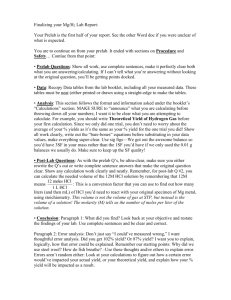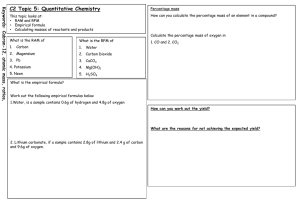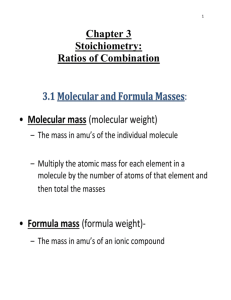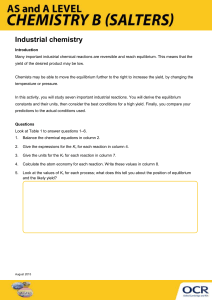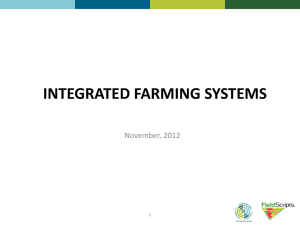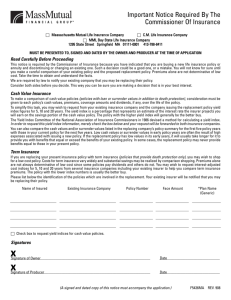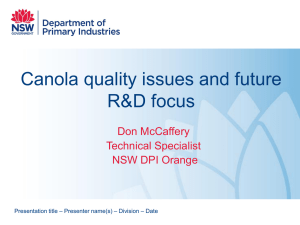Percent Yield Powerpoint
advertisement
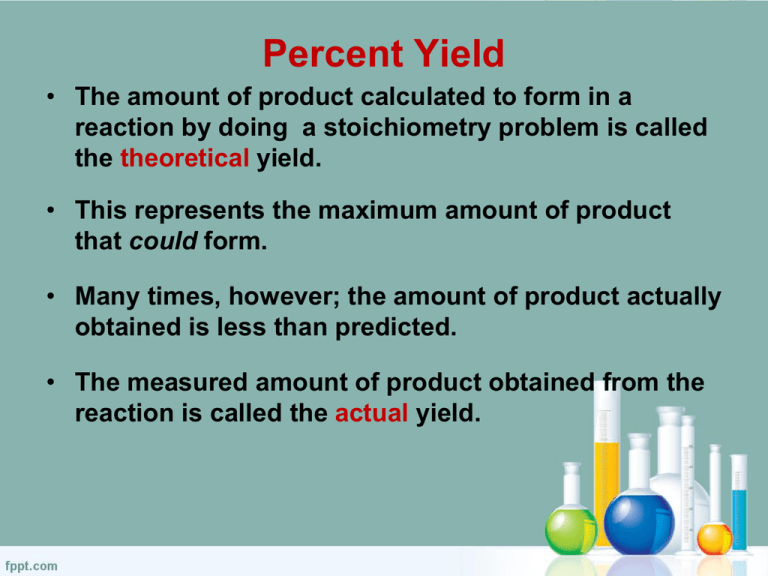
Percent Yield • The amount of product calculated to form in a reaction by doing a stoichiometry problem is called the theoretical yield. • This represents the maximum amount of product that could form. • Many times, however; the amount of product actually obtained is less than predicted. • The measured amount of product obtained from the reaction is called the actual yield. • Percent Yield is used to evaluate the efficiency of a reaction. Actual Yield Percent Yield = ---------------------------- x 100 Theoretical Yield Percent Yield • Consider the reaction: 2 C (s) + 2 H2O (g) CH4 (g) + CO2 (g) a)How many grams of CH4 be produced from 225 g C? b)If 120 g of CH4 was actually collected from the reaction, then what was the percent yield for the reaction? • Aluminum reacts the copper (II) sulfate according to the reaction below. If 1.85 g Al reacts and the percentage yield is 56.6%, what mass of Cu is produced? 2 Al (s) + 3 CuSO4 (aq) Al2(SO4)3 (aq) + 3 Cu (s) Sample EOC Question During the production of aspirin, 2.6 g of aspirin can be formed from 2.0 g of salicylic acid. What is the percent yield if only 1.7 g of aspirin is produced? A. 35 % B. 65% C. 77% D. 85% Wrapping It Up • Reflect on what you have learned concerning the today’s topic. • Respond to the following… – What is the most important thing you learned today? – What is one question you would still like answered? – What is a way what you have learned today connects with what you knew before?




